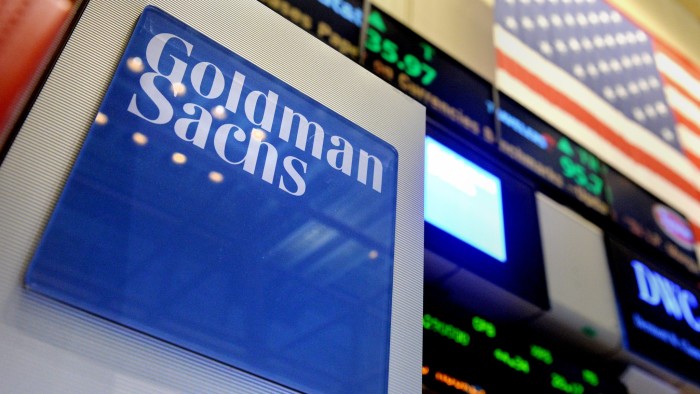Goldman Sachs files patent for virtual settlement currency

Simply sign up to the Currencies myFT Digest -- delivered directly to your inbox.
Goldman Sachs has made a patent application for a cryptocurrency settlement system in a move that underlines bank hopes that the architecture behind bitcoin can revolutionise global payments.
The application for a new virtual currency, dubbed “SETLcoin” by the bank, said it would offer “nearly instantaneous execution and settlement” of trades involving assets including stocks and bonds.
Banks have been racing to tap the power of blockchain — the ledger system that backs digital currencies such as bitcoin. Harnessing the technology has been likened to the changes wrought by file transfer systems on the music industry, or to the effect that email had on communication.
Although electronic dealing platforms have increasingly made front-office trades virtually instantaneous, the actual swapping of payments often still takes days, creating risk in the banking system.
The premise of blockchain is a network of computers that share the costs of transactions and use cryptography to keep deals secure, although regulators have expressed concerns about this aspect. Trades are recorded on a public ledger that anyone on the network can see.
Potential uses range from payments and storing client identities to possibly developing “smart” products, such as a credit derivative that pays out automatically upon default by the underlying company.
Goldman’s recently published application, first reported by bitcoin magazine, describes processes “to substantively instantly settle securities, based on cryptographic currency technology, without the risks associated with traditional settlement technologies”.
The application is the latest in a series of efforts by banks to determine how to adopt the technology, which in theory removes the need for middlemen such as exchanges and clearing houses.
One recent report estimated blockchain could cut up to $20bn a year off bank’s infrastructure costs by 2022.
But few are sure yet how blockchain will ultimately be adopted. Some would-be users are trumpeting a “permissionless” open source system — similar to bitcoin — while others are backing private networks.
In a bid to standardise use of the technology, more than 20 banks, including Barclays, HSBC and UBS have backed a start-up called R3 CEV, which is setting up a private blockchain open only to invitees.
Others, such as Goldman, are developing their own systems. Citigroup is testing its own “Citicoin” in its laboratories.
Banks are also increasingly hedging their bets: Goldman also led a $50m funding round for Circle Internet Financial, which aims to use bitcoin to handle consumer payments.
Comments